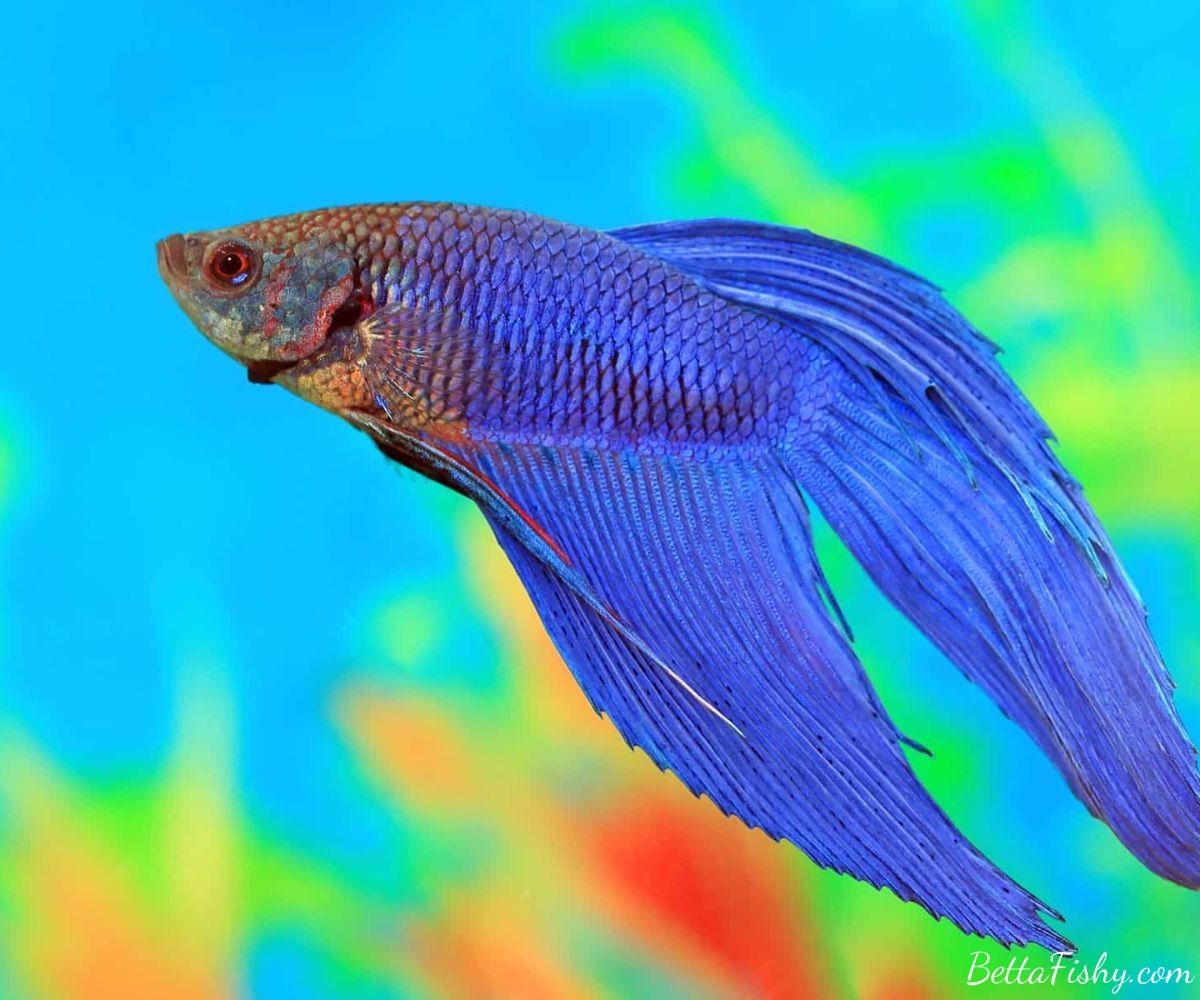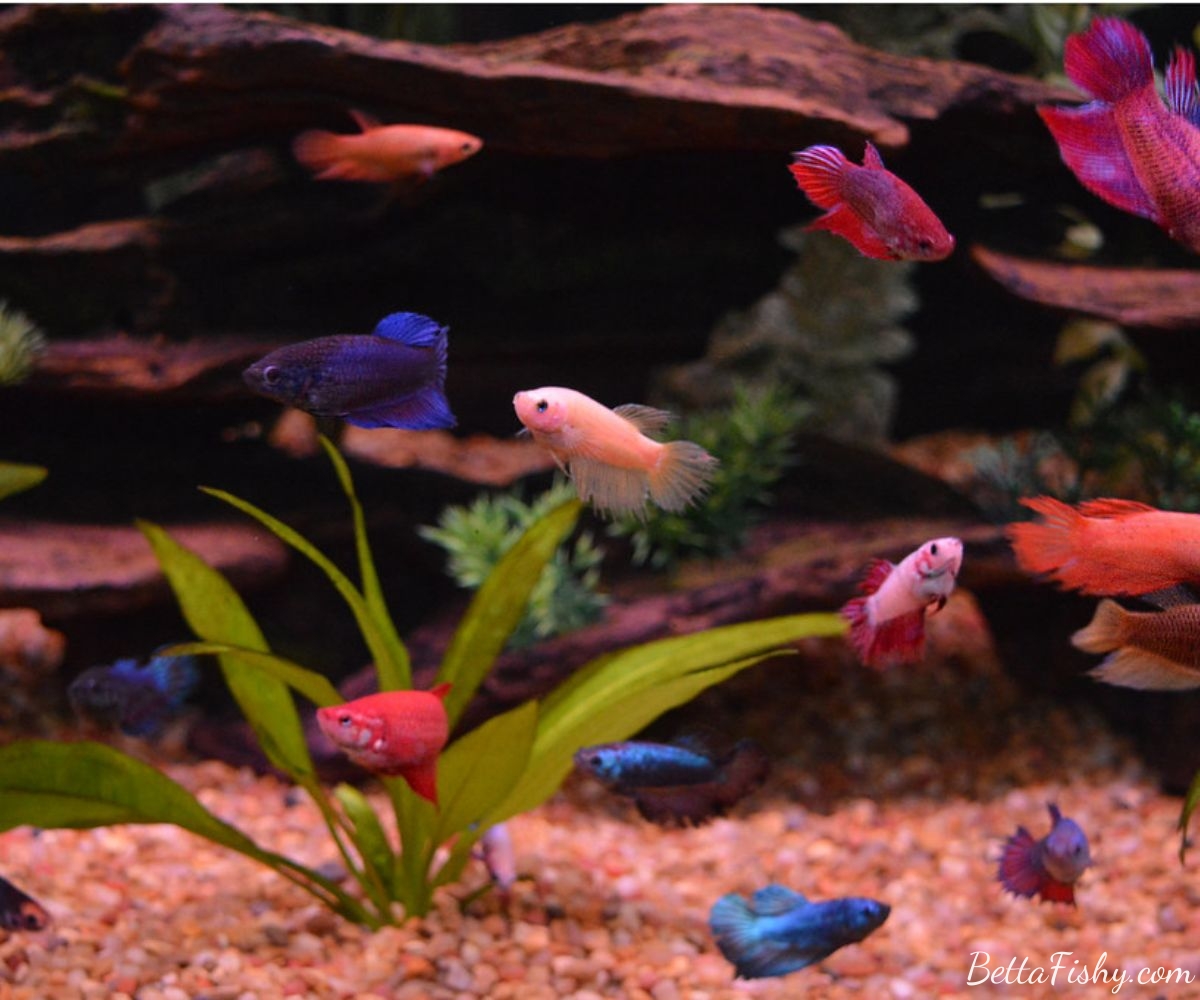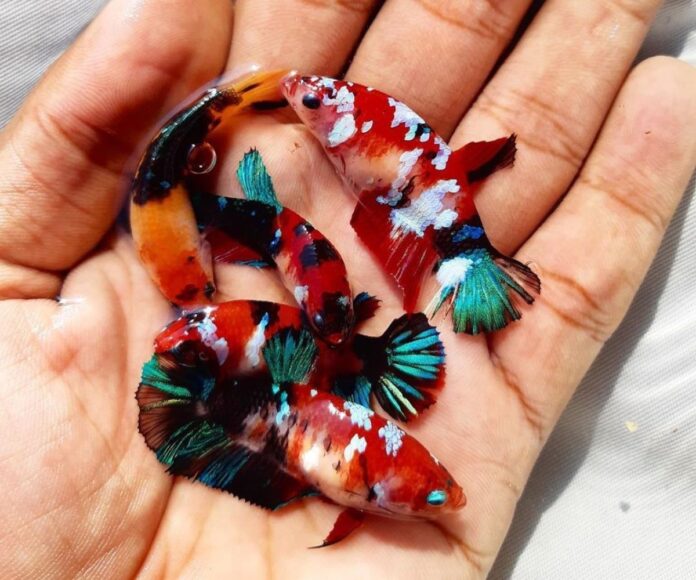Introduction
Female betta fish types are a popular choice for aquarium hobbyists looking to add a splash of color and activity to their tanks. Unlike the longer-finned and more brightly colored male bettas, females offer their own unique appeal. Female bettas have shorter fins and more subdued colors than males, but what they lack in flashy looks they make up for in personality.
While male bettas are intolerant of each other and must be kept solitary, female bettas can live together in groups, allowing for interesting social dynamics. Their smaller size and more peaceful temperament also opens up options for tank mates that can’t be housed with aggressive males.
This guide will provide an in-depth look at the qualities that make female bettas special. We’ll cover the key differences in appearance between males and females, explore the most common tail types and color varieties seen in females, and discuss how to care for and breed these delightful fish.
With their vibrant colors and active nature, female bettas make an exceptional addition to tanks of all sizes. Let’s dive in and explore the wide range of colors, finnage, and behaviors the female betta has to offer!
Appearance of Female Betta Fish Types

Female bettas differ in appearance from males in a few key ways. The most noticeable difference is in the fins. Females have much shorter fins than males, with smaller rounded tail fins rather than long, flowing fins. Their fins are delicate and meant for efficient swimming rather than flashy displays. Females also tend to be smaller in size compared to males, growing to around 2-3 inches in length.
The colors and patterns on female bettas are also less showy and vibrant than males. While male bettas exhibit bright, solid colors in shades of red, blue, green and have heavy iridescent scaling, females show more subtle colors, like pastel orange, brown, grey, with light spotting or barring. This natural camouflage helps female bettas avoid too much attention in the wild when carrying eggs. Their duller coloring also helps differentiate them from the males when breeding.
Overall, female betta fish have a streamlined, smaller appearance focused more on agility and subtlety than flashy fins and bright colors. For more visual details on the differences in appearance between males and females, check out this helpful photo guide: The Anatomy of a Betta Fish: Male and Female Differences
Tail Types
There are several common tail types seen in female bettas:
Veiltail – This is the most common, basic tail type. Veiltails have long, flowing fins that drape downwards from the body. The tails have minimal webbing between rays and appear thin and veil-like. Veiltails are one of the hardiest tail types.
Crowntail – Crowntails have spiky, flared tails with extended rays and a unique crown-like appearance. The webbing is reduced between the tail rays, giving the frilly, spiky look. Crowntails come in both short-finned and long-finned varieties.
Halfmoon – Halfmoon bettas have tails that span 180 degrees or more. The tails are rounded with very full webbing. To be considered a true halfmoon, the tail must be perfectly symmetrical. Halfmoons usually have longer fins and make impressive display fish.
Double tails have a much longer dorsal fin compared to other tail types. While less common, they have two distinct tail lobes rather than one continuous fin.
Female bettas exhibit these same tail shapes but typically with shorter, less showy fins than males. The tail types are most apparent when the female betta flares.
Color Variations

Female bettas come in a wide array of vibrant colors and patterns. Some of the most common color variations include:
Red – This includes light pinkish-red to deeper vibrant red. Red colorations can cover the entire body or just the fins.
Blue – Ranging from pale sky blue to richer royal blue tones. Blue bettas may have accents of red or black.
Green – Emerald, jade, or teal shades of green. Often with reddish accents on fins.
Orange – Bright orange or peach shades, sometimes with iridescent scales that shine.
Yellow – Buttery yellow to brighter lemony tones. Yellow bettas may have black, blue, or red markings.
Other colors like purple, black, white, and brown are seen but less common. Occasionally there are more unique variations like cellophane (clear fins) or patches of iridescent dragon scaling.
The brilliant colors and variety of patterns make female bettas appealing to aquarists. You can find females with a single solid color or complex kaleidoscopes of multiple shades and markings. When selecting females for a sorority tank, go for contrasting colors to make each one stand out.
Female Betta Behavior
Female bettas tend to be more peaceful and less aggressive than males. Males are territorial and will attack other male bettas if housed together. Females do not exhibit the same level of aggression toward each other. This makes it possible to keep female bettas together in a sorority tank under the proper conditions.
Female bettas are generally compatible with other peaceful community fish. They can be housed in a community tank with species like neon tetras, Cory catfish, platies, guppies, rasboras, gouramis, and loaches. However, it’s best to avoid fish with large, showy fins that female bettas may mistake as rivals. Male guppies in particular can sometimes become targets for nippy female bettas. It’s recommended to have at least a 10 gallon tank if housing female bettas with other fish.
When first introducing a female betta to a community tank, keep a close eye on her behavior. Be prepared to remove her if she shows aggression toward tank mates. Providing plenty of hiding places and densely planted areas can help curb aggressive tendencies in a community tank setting. With time, proper tank mates, and lots of foliage, female bettas generally do quite well in a peaceful community environment.
Female Betta Sorority Tanks

Female bettas have a reputation for getting along better than males. This makes it possible to keep groups of females together in a sorority tank under the right conditions. Here’s what you need to know about housing female bettas together:
Tank Size: A sorority tank should provide each female with adequate space. Aim for at least 10 gallons, with 5-8 gallons per additional female. A densely planted tank helps reduce aggression and territorial issues.
Number of Females: Start with at least 4-5 females, as too few can lead to excessive aggression. Introduce all females simultaneously to avoid one claiming the tank as her territory first. Have backup tanks ready in case a female must be removed.
Tank Set Up: Have plenty of hiding spots and broken sight lines. Floating plants, caves, driftwood, and dense planting can all help define territories. Provide dim lighting to minimize aggression.
Monitor Closely: Observe the females for the first several weeks. Look for chasing, nipped fins, or one female isolating herself. Be prepared to remove any bullies or stressed fish if harmonious behavior can’t be achieved.
With close supervision, an adequately sized and decorated tank, and the right mix of females, a betta sorority can be a stunning showpiece. But be prepared to separate females if problems arise.
Experience In Caring For Female Betta
Female bettas require similar care to males in many regards, but have some unique needs as well. The recommended tank size for a female betta is at least 5 gallons, though 10 gallons is ideal as it allows for more swimming space and a stable environment. The tank should have a gentle filter, soft gravel or sand substrate, and both hiding places and open areas for swimming. Live or silk plants are recommended as females may tear long-finned tails on plastic plants. The water temperature should be kept between 75-82°F and the pH between 6.5-7.5.
Female bettas are more peaceful than males, but tankmates should be chosen carefully. Good options include small tetras, rasboras, danios, corydoras catfish, snails, and shrimp. Avoid aggressive fish like tiger barbs that may nip fins. It’s also possible to keep female bettas together in a sorority tank, with a minimum of 5 females. This requires at least a 20 gallon tank heavily planted with hiding spots.
Feed female bettas a varied diet including high quality betta pellets and treats like bloodworms or brine shrimp. Avoid overfeeding, only feeding what they can consume in 2-3 minutes. With proper care, female bettas can live 2-4 years.
Breeding Female Bettas
Breeding bettas requires some specialized knowledge and preparation. Here is an overview of the breeding process for female bettas:
First, you need to condition the female and male betta for breeding. Feed them high quality live foods like brine shrimp and bloodworms for 2-4 weeks before introducing them to spawn. This helps bring the fish into peak breeding condition.
The breeding tank should be around 10 gallons and have soft, acidic water between 75-86°F. Include hiding spots for the female andfloating plants for the male to build his bubble nest under. The tank should also have a mesh divider to separate the pair until ready to spawn.
Female bettas release eggs when squeezed, so the male will wrap himself around her to fertilize the eggs as they fall. He collects the fertilized eggs in his bubble nest. Breeding can last up to several hours. Then remove the female as the male guards the nest.
The fry hatch within 24-48 hours and will be tiny. Feed them infusoria or specially formulated powdered fry food 4-5 times a day. Water changes help remove waste and keep the tank clean.
Within 6-8 weeks the fry will be large enough to sell or transfer to a grow-out tank. Breeding bettas takes preparation but can be a rewarding experience!
Tips For Choosing Quality Female Betta Fish
Finding a healthy female betta to add to your aquarium can be tricky. Here are some tips on where to locate high-quality female bettas:
Specialty aquarium stores and local fish stores are a good option, as they typically work with reputable breeders and importers. However, selection may be limited. Inspect females closely for any signs of illness or injury.
When buying online, check seller reviews and guarantee live arrival policies. Only buy females that look alert and active in photos, without clamped fins or visible problems. Opt for express overnight shipping.
Wherever you obtain them, choose females displaying rich colors, full flowing fins, and active swimming. With good care, healthy female bettas can live 2-4 years and thrive in your freshwater aquarium.
Conclusion
In conclusion, female betta fish types can make rewarding pets for aquarium hobbyists when properly cared for. Key takeaways include:
- While more peaceful than males, female bettas may still exhibit aggression and require special tank setups like a sorority.
- Provide a minimum tank size of 10 gallons for a sorority with 5+ females. Heavily plant the tank to break up sight lines.
- Maintain warm, clean water between 78-80°F, with pH of 7.0-8.0. Perform regular partial water changes.
- Feed a high quality pellet diet, supplemented with live or frozen foods like bloodworms or brine shrimp.
- Breeding female bettas requires a special breeding tank setup. Fry can be challenging to raise.
- When selecting females, look for active fish with bright colors and healthy fins. Avoid lethargy or clamped fins.
With the proper care outlined here, female bettas can thrive and display their energetic, beautiful personalities in home aquariums.


